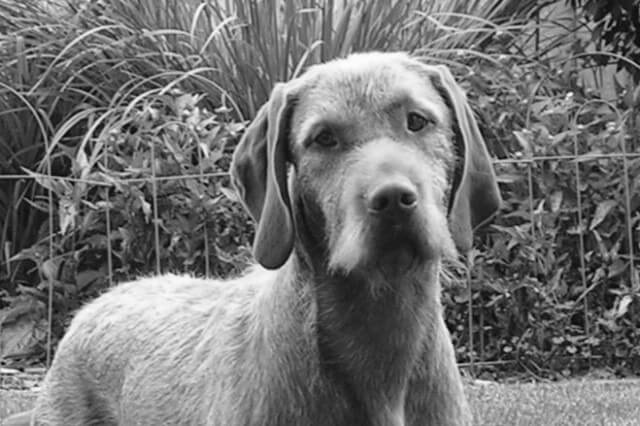
Getting to Know the Wirehaired Vizsla (Got Drótszõrû Magyar Vizsla?)
Discover the Wirehaired Vizsla: a versatile, intelligent, and affectionate hunting dog with a rich history and unique traits.
Home » Meet The Breeds » Wirehaired Vizsla


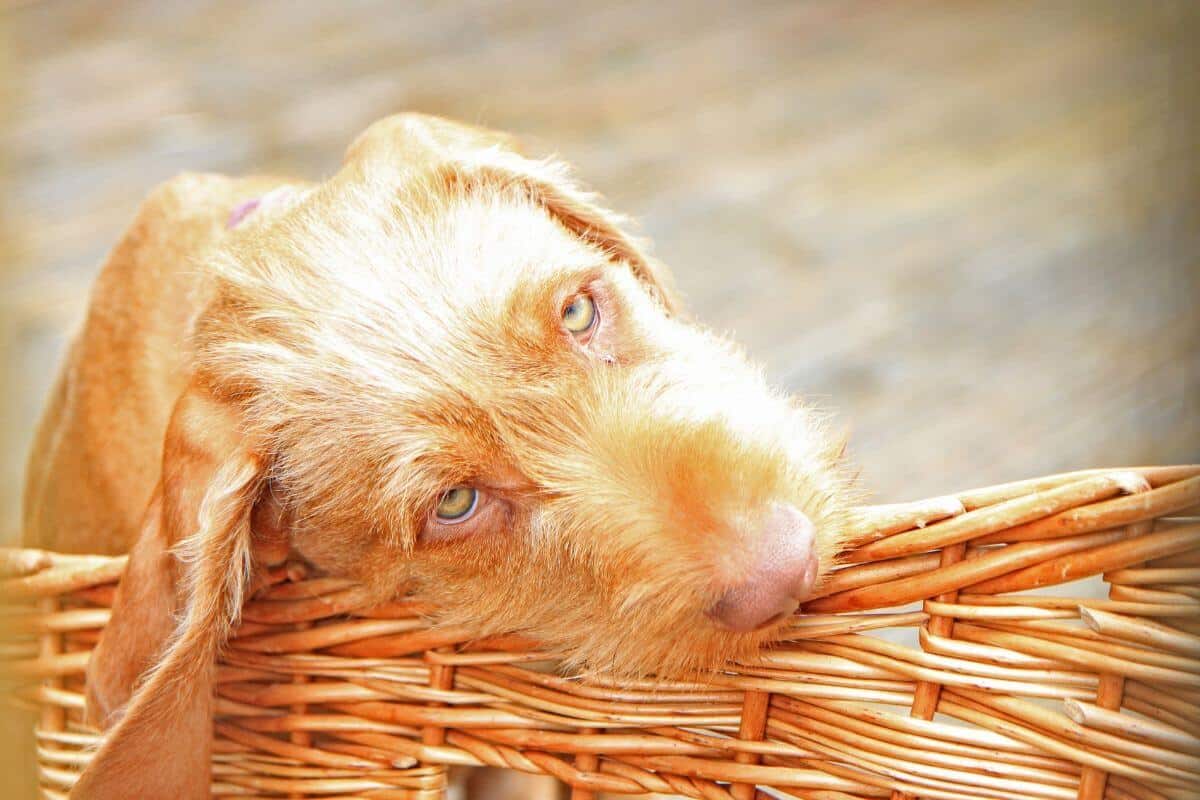
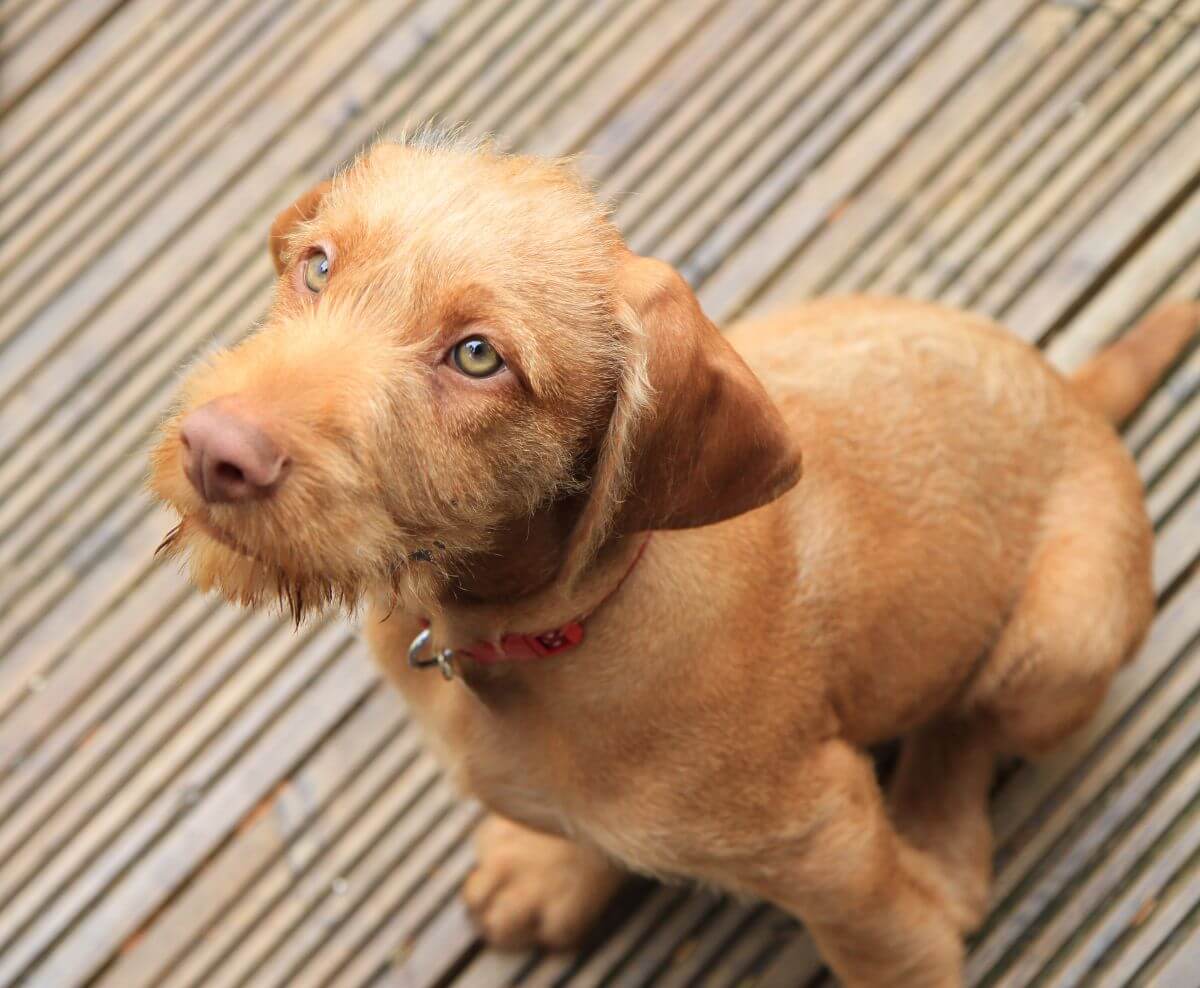
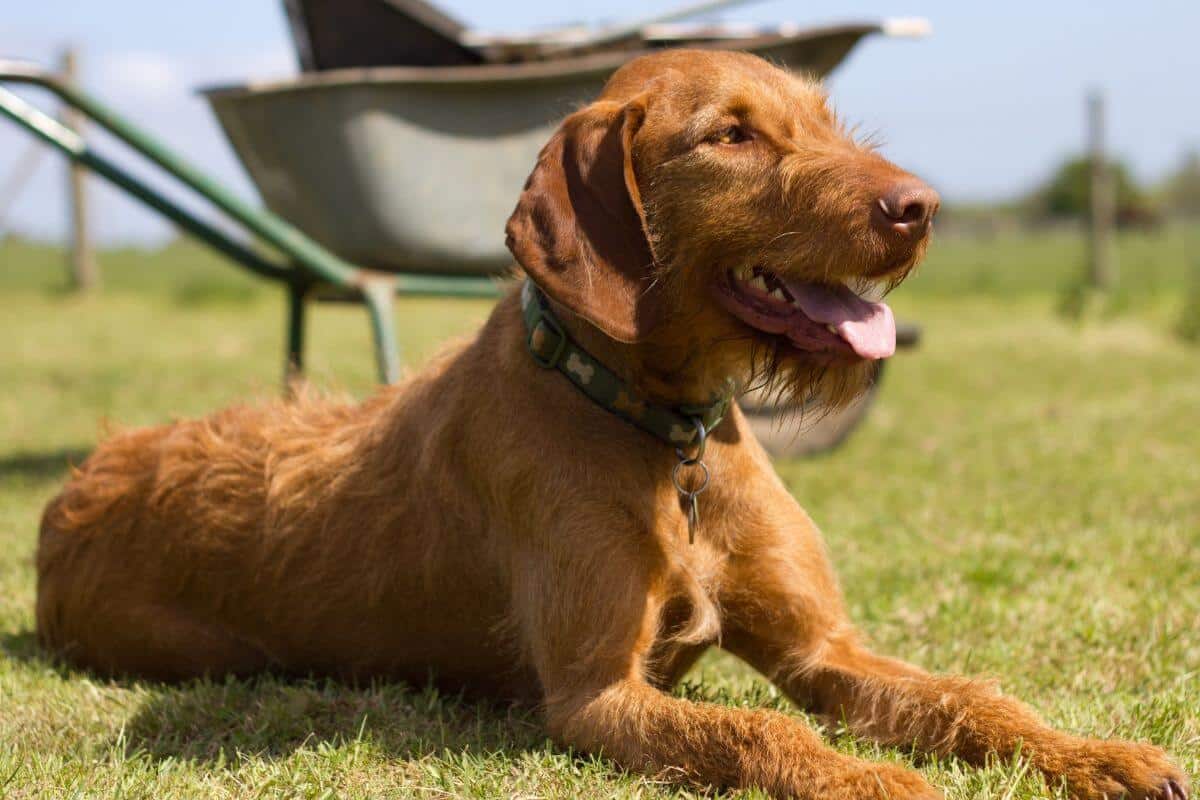
The Wirehaired Vizsla is a versatile and athletic hunting dog known for its distinctive wiry coat and versatile hunting abilities. Originating from Hungary, this breed balances its exceptional performance in the field with a loyal and affectionate nature, making it a favorite among active families and hunters alike.
Sporting
21.5 – 25 inches
45 – 65 pounds
12 – 14 years
| Country of Origin | Hungary |
|---|---|
| Bred For | Hunting Versatility |
| Known For | Golden Rust Color, Wiry Coat |
| Popularity | Low |
| Temperament | Eager, Loyal, Protective, Self-Confident |
| Activities | Hunting, Running, Conformation Shows, Dog Sports |
The Wirehaired Vizsla traces its origins to Hungary in the 1930s, when breeders sought to create a more robust version of the smooth-coated Vizsla. The goal was to develop a dog capable of enduring the harsh climate and rugged terrain of the Hungarian countryside while maintaining the breed’s innate hunting skills and affectionate temperament.
To achieve this, breeders crossed the Magyar Vizsla with the German Wirehaired Pointer, resulting in a dog with a denser, weather-resistant coat and greater physical stamina. Over time, selective breeding refined the Wirehaired Vizsla into a distinct breed that retained its Hungarian heritage while offering increased versatility for hunters and outdoor enthusiasts.
The Wirehaired Vizsla was recognized as a separate breed by the Fédération Cynologique Internationale (FCI) in 1986 and by The Kennel Club in the UK in 2004. The American Kennel Club (AKC) granted full recognition in 2014, placing the breed in the Sporting Group. Today, the breed continues to excel in hunting, field trials, and various dog sports while also enjoying life as a devoted family companion.
Wirehaired Vizsla males typically stand between 23 and 25 inches tall at the shoulder, while females measure slightly less at 21.5 to 23 inches. Males generally weigh between 55 and 65 pounds, with females weighing 45 to 55 pounds.
The Wirehaired Vizsla presents a balanced and athletic appearance, with a medium-sized body that is slightly longer than it is tall. The breed is sturdy without being heavy, showcasing a muscular frame that supports endurance and agility. The overall impression is one of strength and elegance, with a harmonious build that reflects its purpose as a versatile hunting companion.
Texture: The Wirehaired Vizsla’s coat is dense, wiry, and weather-resistant, providing excellent protection in harsh environments. The outer coat is coarse to the touch and lies close to the body, while the undercoat is soft and dense, offering insulation. The coat is close-lying and measures approximately one inch in length, with shorter hair on the face and ears as well as on the legs. Coat brushes appear on the back of the front legs and in a V-shape on both sides of the neck. Pronounced eyebrows and a harsh beard create a distinguished look to the head.
| Standard Color | |
|---|---|
| Golden Rust | y |
| Golden | n |
| Red | n |
| Red Golden | n |
| Rust | n |
| Rust Golden | n |
| Sandy Yellow | n |
| Standard Marking | |
|---|---|
| White Markings | n |
A Note About Color: The coat of the Wirehaired Vizsla is golden rust in varying shades. The color is uniform except on the ears where it may be slightly darker. Faulty colors include brown, red, and yellow. White may appear on the forechest or throat but should not be more than two inches in diameter. White toes are allowed, but the white may not extend above the toes. Otherwise, white may not appear anywhere else on the dog. The eyes, eye rims, lips, nose, and toenails blend with the color of the coat.
The Wirehaired Vizsla’s tail is set just below the level of the croup. It is historically docked to about two-thirds of its natural length. When undocked, the tail is of medium length, thick at the base, and tapers towards the tip. It is carried near the horizontal and should never be curled or carried between the legs.
The Wirehaired Vizsla is an active and versatile hunting dog that thrives in an environment where it can engage both its body and mind. Prospective owners should be prepared for the breed’s energy levels, intelligence, and need for companionship.
The Wirehaired Vizsla is a generally healthy breed with a lifespan of 12 to 14 years. Regular veterinary care, a balanced diet, and consistent exercise are essential to maintaining good health and overall well-being. While the breed is relatively robust, individuals can be prone to certain health conditions.
The Wirehaired Vizsla may encounter some health issues, including:
The Wirehaired Vizsla is a friendly, intelligent, and devoted breed that forms strong bonds with its human companions. These versatile dogs are known for their affectionate nature and thrive in households where they can be a part of daily activities.
Their sensitivity allows them to be attuned to their handler’s emotions, so harsh training methods and extended periods of solitude will be counterproductive. They are generally good with children and other dogs when properly socialized, displaying both patience and a playful demeanor.
Wirehaired Vizslas are typically friendly toward strangers but may initially show a reserved or cautious side. This makes early socialization crucial for their overall development. Their eagerness to please and cooperative nature can make them excellent companions for both experienced and novice dog owners.
Wirehaired Vizslas require a high-quality, balanced diet to support their active lifestyle and maintain their lean, muscular build. As puppies, they benefit from a diet designed to support steady growth, typically fed in three or four small meals per day.
Once adulthood is reached at around one year of age, two meals per day are recommended to meet their nutritional needs without overfeeding. The quantity of food depends on the dog’s size, age, and activity level, but most adults will consume about 2.5 to 3.5 cups of food per day, divided into two portions.
Monitoring the Wirehaired Vizsla’s weight and adjusting portions as necessary is essential to prevent obesity. Fresh, clean water should always be provided, and consultations with the dog’s breeder and veterinarian should be sought for specific dietary recommendations or concerns.
The Wirehaired Vizsla is highly intelligent and eager to please, making training an enjoyable and rewarding experience. These dogs respond best to positive reinforcement methods, such as praise, treats, and play, that encourage their natural desire to work with their handler.
While generally quick learners, their sensitive nature means they may shut down if training is overly harsh or punitive. Consistency, patience, and early socialization are crucial to shaping a happy and well-mannered adult dog.
This breed has a moderate tendency to bark, often alerting to new sights or sounds. This tendency requires early training to curb unnecessary barking. Their high intelligence also means they can become bored if training sessions are too repetitive or lack variety.
Providing mental challenges, such as puzzle toys or advanced obedience exercises, can help to keep their sharp minds engaged. Additionally, they can have a potential for wandering, so ensuring they have a secure environment is essential during off-leash activities.
The Wirehaired Vizsla is an energetic and athletic breed that thrives on regular physical and mental stimulation. These dogs require daily exercise to maintain their physical health and mental well-being. Long walks, hikes, or jogging sessions are excellent activities for this active breed.
| Energy Level | High |
|---|---|
| Exercise Requirements | 2 Hours/Day (Minimum), Daily Walks, Daily Exercise, Playing with Other Dogs |
Due to their hunting heritage, Wirehaired Vizslas enjoy games that tap into their natural instincts, such scent work and fieldwork. They also excel in activities like swimming, which provides a low-impact way to burn off energy.
Without adequate exercise, Wirehaired Vizslas may become bored or restless, leading to undesirable behaviors. A well-exercised dog is a happy and well-adjusted companion.
The Wirehaired Vizsla’s dense, wiry coat is relatively low-maintenance but benefits from regular grooming to keep it in good condition. Weekly brushing helps to remove loose hair and prevents matting, while hand-stripping the coat occasionally is recommended to maintain its texture and weather-resistant properties.
| Coat Type | Wiry, Close Lying, Dense |
|---|---|
| Grooming Requirements | Weekly Brushing, Occasional Bathing, Routine Ear Cleaning, Periodic Nail Trimming, Regular Tooth Brushing |
Shedding in this breed is moderate, with seasonal increases, and their grooming needs are generally manageable for most owners. Bathing should be done as needed, using a dog-specific shampoo to avoid stripping the skin and coat’s natural oils.
Attention should also be given to the dog’s nails, ears, and teeth. Regular nail trimming prevents discomfort and splitting, while weekly ear checks help to reduce the risk of infections. Brushing the teeth several times a week promotes good dental hygiene and overall health.
Wirehaired Vizslas are highly adaptable and can thrive in various living environments, provided their exercise and companionship needs are met. They can live comfortably in apartments or homes with smaller yards if given ample daily exercise, but they truly shine in larger spaces where they can run and explore.
Their dense coat allows them to tolerate cold weather better than their smooth-coated counterparts, but they still appreciate protection during extremes of temperature. Hot weather can be more challenging for them, so it is essential to provide plenty of shade, fresh water, and rest during the warmer months.
Wirehaired Vizslas are highly social and form strong bonds with their human companions, making them happiest when included in family activities. They do not do well when left alone for extended periods and thrive in homes where someone is present for much of the day.
Bringing home a Wirehaired Vizsla puppy is an exciting and rewarding adventure. These puppies are known for their curious, playful, and affectionate nature, but they also require consistent training and socialization from an early age.
Caring for a Wirehaired Vizsla puppy involves providing the right balance of nutrition, exercise, training, and companionship. A high-quality puppy food is essential to support the puppy’s growth and development, and feeding should be divided into three to four meals per day.
Socialization is critical during the early months. Exposing the puppy to various environments, people, and animals will help it to become adaptable and more confident. Puppy training classes are an excellent way to introduce basic commands while also providing opportunities for social interaction.
Exercise should be moderate, as excessive physical activity can stress a puppy’s developing joints. Short play sessions and gentle walks are ideal during the growth phase. Mental stimulation is equally important, and puzzle toys or interactive games can keep the pup’s intelligent mind engaged.
Consistency, patience, and positive reinforcement are key to building trust and ensuring a strong bond with a Wirehaired Vizsla puppy. Crate training is helpful too, for housebreaking and for creating a safe space where the puppy can rest during the day and sleep at night.
The Wirehaired Vizsla is recognized by the world’s leading registries and kennel organizations, which categorize the breed into a specific Group based on its unique characteristics. This breed is recognized worldwide under the following Group designations:
| Organization | Group Designation |
|---|---|
| AKC (American Kennel Club) | Sporting |
| UKC (United Kennel Club) | Gun Dog |
| CKC (Canadian Kennel Club) | Sporting Dogs |
| ANKC (Australian National Kennel Council) | Gundogs |
| RKC (The Royal Kennel Club) | Gundog |
| FCI (Fédération Cynologique Internationale) | Group 7: Pointing Dogs Section 1: Continental Pointing Dogs |
The ideal Wirehaired Vizsla is described by a Breed Standard that is approved by each of the world’s leading registries and kennel organizations. The Breed Standards for this breed may be found in the following links:
| Organization | Breed Standard |
|---|---|
| American Kennel Club | AKC Wirehaired Vizsla Breed Standard |
| United Kennel Club | UKC Wirehaired Vizsla Breed Standard |
| Canadian Kennel Club | CKC Wirehaired Vizsla Breed Standard |
| Australian National Kennel Council | ANKC Wirehaired Vizsla Breed Standard |
| The Royal Kennel Club | RKC Wirehaired Vizsla Breed Standard |
| Fédération Cynologique Internationale | FCI Wirehaired Vizsla Breed Standard |
For those interested in adopting a Wirehaired Vizsla, rescue groups provide a wonderful opportunity to give a dog a second chance at a loving home.
Yes, Wirehaired Vizslas shed moderately throughout the year, with seasonal increases during shedding periods. Regular brushing helps to manage shedding and keeps the wiry coat in good condition.
No, Wirehaired Vizslas are not hypoallergenic. While their wiry coat may trap dander more than smooth-coated breeds, they still produce allergens that can affect sensitive individuals.
Wirehaired Vizslas typically live 12 to 14 years. With proper care, including regular vet visits and a healthy lifestyle, they often enjoy a long and active life.
Yes, Wirehaired Vizslas are affectionate and loyal, making them excellent family dogs. They thrive in homes where they can be part of daily activities and form strong bonds with all members of the family.
Wirehaired Vizslas are not excessive barkers, but they may bark to alert their family to new sights and sounds. Early training and socialization can help to manage unnecessary barking tendencies.

Discover the Wirehaired Vizsla: a versatile, intelligent, and affectionate hunting dog with a rich history and unique traits.
Explore the AKC standard for the Wirehaired Vizsla, a durable, versatile hunting dog bred for substance and balance in all terrains.

Essential guide for judges on assessing the rare Wirehaired Vizsla, focusing on distinct standards and unique coat traits.

Discover the versatile and loyal Wirehaired Vizsla, a top-notch hunting dog, family companion, and active competitor in various dog sports.
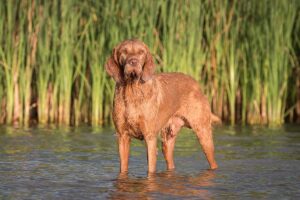
Coat and Color of the Wirehaired Vizsla | The quotes that follow are from the AKC Official Breed Standard of the Wirehaired Vizsla
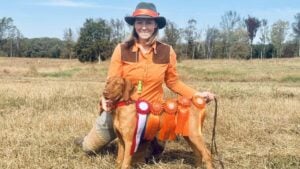
From Budapest roots to breeding in NC, a journey of passion, purpose, and Wirehaired Vizslas at Cave Canis Kennels.

Purebred Vizsla Breeders Mark & Bonnie Goodwein Koppertone Vizslas interview by Allan Reznik. Our lifetime journey and love for Vizslas
The best way to ensure a long and happy relationship with a purebred dog is to purchase one from a responsible breeder. Not sure where to begin?
Contact the National Parent Club’s Breeder Referral Program, which is listed on the AKC Breeder Referral Contacts page.
